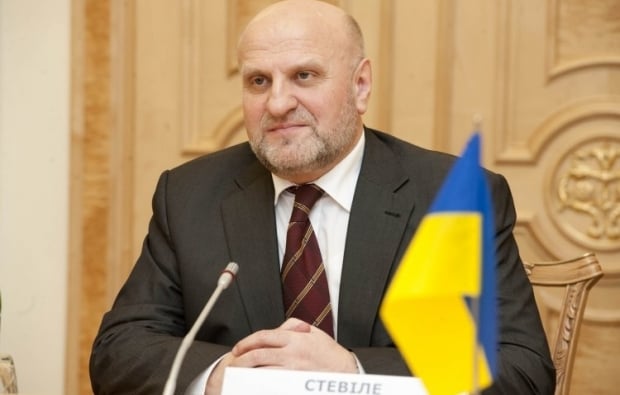
Moldova's Ex-Ambassador to Ukraine: "Our conflicts have same causes and scenarios, but ending unclear"
Former Ambassador of the Republic of Moldova to Ukraine, the expert on frozen conflicts, Ion Stavila, has told in an interview with UNIAN about the differences between the conflicts in Transnistria, Crimea and Donbas; how the mood of Transnistrians has changed, and why the broad autonomy is better than federalization.
How, in your opinion, is the situation with Transistria for Moldova similar to that with Crimea and Donbas for Ukraine?
There have been plenty of parallels drawn and comparisons noted, but above all, we don’t use the term “occupied territories” in the official lexicon. We prefer saying "areas beyond control of constitutional authorities." It is important to maintain a favorable atmosphere for further dialogue between Tiraspol and Chisinau.
With regard to the similarity, our conflict and your conflict arose for the same reasons, evolved by the same scenario, and it’s unclear how they’ll end.
As for the differences, we have overcome the hot phase, and we see a prolonged phase of political settlement at the moment. In addition, the armed conflict in Moldova did not last long, just a couple of months. And, as a result, the losses in Moldova and Ukraine can’t be compared. I not only mean the death toll, although we had more than 1,000 people killed from both sides, but we also have not so many internally displaced persons and refugees - only a few hundred people. Meanwhile, Ukraine suffered the enormous losses. We are witnessing the protracted armed conflict, people are dying every day, and the number of refugees totals hundreds of thousands.
Transnistria has sought accession to the Russian Federation for many years. Instead, at Moscow’s whim, it’s the Ukrainian Crimea which was illegally annexed by Russia...
The fact is that there are different opportunities for Ukraine and Moldova to influence the situation in their troubled regions. Russia has faced plenty of difficulties to maintain ties with the Transistrian Moldovan Republic (TMR), especially recently. Ukraine is between us. To get to Transnistria, Russia must pass through the territory of Ukraine.
Donbas and Crimea are geographically closer [to Russia]. And despite the fact that there is no direct land communication with Crimea, they have direct access through the Kerch Strait. At the same time, Transnistria is an enclave. And there is quite a vast space between TMR and Russia, which is Ukraine.
Over the past year the Transnistrian authorities have complained a lot about the blockade of the region on the part of Ukraine. Do you believe these complaints are fair?
In my opinion, this is pure speculation. They try to present it as the Transnistrians live a hard life, because the region is blocked. But what is the blockade? It’s a complete sealing of borders around the perimeter of the region, a ban on the movement of goods and people ... That’s not happening.
Besides, the main argument that refutes these points, is the official statistics of Transnistria in recent years. After all, ahead of the current crisis, they reported increasing volumes of foreign trade turnover. Moreover, a significant increase… In this context, the question arises: is it possible to increase the trade, being under blockade? This is nonsense, this is absurd.
Therefore, there is no blockade, but there is speculation, aimed at playing on the people’s feelings, frightening people and searching for the culprits and enemies.
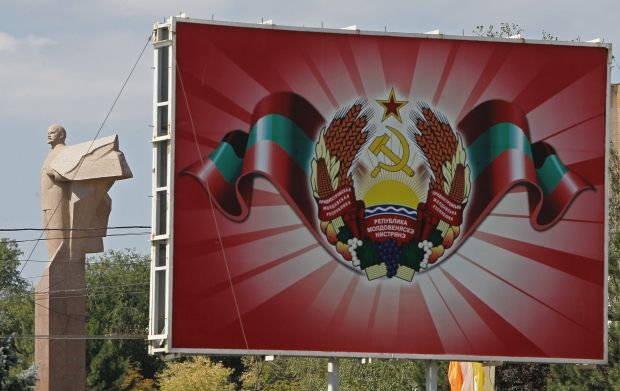
In early November representatives of Moldova, Ukraine and the Mission of the European Union Border Assistance (EUBAM) have signed in Chisinau an agreement on joint control at the Pervomaisk - Kuchurhan checkpoint located at the Transnistrian segment of the Ukrainian-Moldovan border. I understand that the implementation of this agreement in 2016 will allow economic agents, including those in Transnistria, to continue trading and reduce logistical costs. Why did the Transnistrian authorities call it another restrictive measure on the part of Ukraine and Moldova?
If we talk about the technical aspects of the treaty between Ukraine and Moldova, I should say that an intergovernmental agreement was signed back in 1997 on joint control at five checkpoints, of which only one is at the Transnistrian segment - Kuchurhan. This is an important Transnistria-Ukraine communication artery, due to both road and rail links available in the area.
Recently, Ukraine has decided to ban imports and exports of excisable goods to the TMR. For Transnistrian businesses to continue with their foreign trade, they have to transport goods through the checkpoints, controlled by the Chisinau authorities. It turns out that they need to make a great detour to get through the checkpoint. The governments of Moldova and Ukraine have proposed: let's make such a checkpoint in Kuchurhan, so that the trade and movement of goods (including excisable ones) could be resumed at any moment. From the viewpoint of economic advantages, it is obvious that this option suits Transnistria. But they don’t want it, which is a paradox.
That is, the close cooperation on the border with the Moldovan, Ukrainian and EU authorities in the framework of EUBAM – should profit Transnistria. But it seems that they have been influenced from the outside, advising them that it is better not to cooperate in these formats.
Why do they refuse? It’s because the implementation of joint border control would mean recognizing such mechanisms of legitimacy in relations. That is, it would indicate that we have a possibility to conduct joint border control, both by Chisinau and Tiraspol. But neither Tiraspol, nor Moscow okay this, and believe it’s a mechanism of isolation, pressure and increased control over Transnistria.
This position is politically advantageous for those local leaders, who pursue the policy of speculations on the concepts of "blockade" and "isolation," as I said, to have someone to blame for the local hardships in the eyes of the Transnistrians.
How can the upcoming elections scheduled for November 29 change the situation in Transnistria, including this self-imposed isolation and distancing from projects favorable to TMR?
It’s hard to say. On the one hand, we should take into account the international situation, the developments in Ukraine and the confrontation between Ukraine and the Russian Federation. On the other hand, there is a very poor socio-economic situation in the region. The third factor is a fierce confrontation between the political forces in Transnistria.
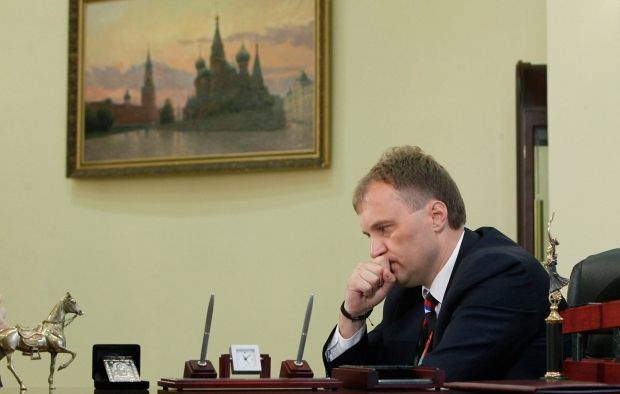
On November 29 the Transnistrians actually have to choose between the old team, representatives of the so-called clan of President Yevgeny Shevchuk, and the team of local oligarchs - the Sheriff company. What is likely to win - power of administrative resources or corporate money?
Unfortunately, I have not followed closely the evolution of the election campaign in Transnistria, but I assume intuitively that there will be either a balance of power, or the advantage on the side of the regional level oligarchs. The government (Shevchuk’s group) has the power and administrative resources, while its opponents (Sheriff) has money. Sheriff owns a network of supermarkets, controlling trade, gas stations, a football club, TV channels, producers of sturgeon and caviar, which they export to the European market, due to the agreement between Moldova and the European Union ...
It is possible that people will prefer the money which, in the end, may be invested in development of the region, including in infrastructure and businesses, which means jobs.
But can we assume that it is a conventional choice between Europe and Russia?
I do not know how much the candidates are oriented to Russia or Europe. In Transnistria, there is a traditional line of rapprochement with Russia, the local residents had made this choice in a referendum. But, given the situation in Ukraine, the project [of accession] is unlikely. On the other hand, there are advantages that the region receives from foreign economic activities, with 75% distributed among the three markets - the EU, Moldova and Ukraine.
In addition, we can assume that the electorate might not obey Moscow, relatively speaking, as it was in the previous so-called presidential elections in Transnistria three years ago. Then Moscow said that their favorite was a local activist Anatoly Kaminsky. A very aggressive campaign was conducted against the group of Yevgeny Shevchuk. But still more that 70% Transnistrians cast their votes in favor of Shevchuk. That is, people living in Transdniestria, while realizing the importance of Moscow's support, social assistance, and cheaper gas, still dared to disobey and not follow Moscow's line.
Why did it happen?
Because the difference between those politicians was visible to the locals, and the people preferred Shevchuk. Today, they say, Shevchuk’s rating has very much fallen. Apparently, he has disappointed the hopes of the population and failed to meet to the demands and expectations of the people. Maybe this is also an important factor that will play against him now.
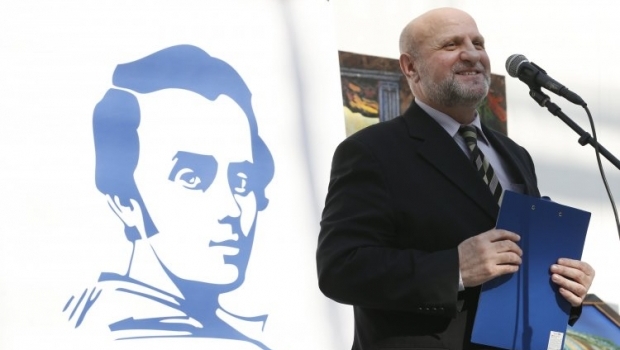
Speaking of Transnistria’s economic relations with the EU, do you believe the EU will extend the trade preferences for the Transnistrian exporters after January 1, 2016?
January 1 may be a turning point for the region, although it’s difficult to say, in which direction. I think that Transnistria is interested in maintaining trade preferences, to retain the level of trade on the existing level. Because, if Transnistria loses these three markets (the EU, the right bank of the Dniester (Moldova) and Ukraine) it will be a severe blow to the region.
I do not know about the content of the ongoing dialogue between Brussels and Tiraspol, but it seems that the EU understands the importance of preserving Transdniestria in this format. I heard the optimistic opinions that the EU will find a formula to maintain a favorable regime for the TMR.
The philosophy of the EU - is the “soft power” principle. If Europe is to remain faithful to this principle, they will look for some formula to preserve the preferential trade regime with Transnistria. Perhaps they will set some quotas for the Transnistrian goods...
It’s a little surprising that Transnistria, while taking the advantage of the regime of autonomous trade preferences on the part of Europe, still stubbornly refuses to support the idea of a free trade area with the EU...
Representatives of Transnistria took part in the Moldova – EU negotiations on a free trade area. They know first-hand what it is, how it was created and how our interests are taken into account. Hence the criticism claiming it’s a disadvantageous trade agreement, only benefiting only the EU is not constructive. They know that it’s not true, in fact.
There are some very EU-focused companies in Transnistria. For example, a textile company sells 95% of its products on the Euromarket. It employs 2,000-3000 people. If Transnistria loses the European market, it will be a severe blow to the region.
How do you assess the role of Ukraine in the efforts to enhance the resolution of the Transnistrian conflict in the past year?
Over the past 1.5-2 years after the Maidan events, Ukraine's position has changed: Ukraine started to support more aggressively the Chisinau’s approach and position in the search for formula for the settlement of the Transnistrian conflict. The measures taken by the Ukrainian authorities to strengthen border controls, improve security, suspecting illegal activities and smuggling, joint control, cooperation on the issues of European integration, - it all played a positive role. This suggests that Ukraine has the opportunity and the potential - economic, political, diplomatic - to have a real, effective, significant impact on the situation in the region and its settlement.
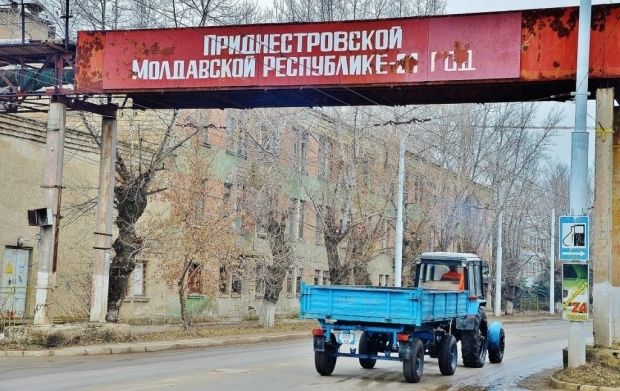
What prevents the negotiations in the 5 + 2 format?
Why are there no dynamics and developments? Because the international environment is not very favorable. There are new tensions, new factors. Therefore, we must admit that today there is a certain stagnation. Meetings in the 5 + 2 format are not held, but there are meetings in the 1+1 format, between Chisinau and Tiraspol. Within the framework of this mechanism, problems of ordinary people, inhabitants of the region are discussed. And we are glad that we have such a dialogue. Because no such dialogue and contacts are observed in other conflict regions.
To date, there is no political will to move forward to conflict resolution. But out of all conflicts, our Transnistrian conflict is the most simple and [able to be] self-settled. In our situation, there is no ethnic conflict, religious conflict, and there is no hatred, rejection at the level of ordinary people. In any other area of conflict, such factors complicate the situation and complicate greatly the process of settlement.
How strong has the May decision of Kyiv to ban the Russian military transit for PMR affected the situation with the freezing of the Transnistrian conflict?
It was a formal decision that had no practical effects and consequences. The fact that the Russian troops, who remain in the region legally as peacekeepers and illegally (without the consent of Chisinau) as soldiers guarding ammunition depots, have long been provided with everything they need - food, fuel, electricity, water, and even uniform and clothes - on the spot.
In addition, the Russian military who are serving in the region are, in fact, local residents. That is, over 80% of troops are Transnistrian residents with Russian passports (Moldova allows multiple nationality).
How big is this contingent?
There is a total of nearly 1,500 [Russian] troops in Transnistria, both legal and illegal.
Is a threat for Ukraine, for example, destabilization of the situation on the Ukrainian border with Transnistria with the use of this military force?
Ukraine should not be afraid. Only the outside forces can affect influence the situation in the region. But I think that they can’t push even from the outside. None of the local people and agencies want to fight, create tension and develop some kind of an offensive action. It’s not in their interest to destabilize the region and create another hotbed of military confrontation.
Therefore, we can only speak in theory of the Transnistrian factor as the source of any threats. It’s unlikely someone will decides to use it for some practical actions. Moreover, the Ukrainian authorities have taken a number of preventive measures and strengthened security at the border. It’s also a limiting factor for the realization of any aggressive plans in the region.
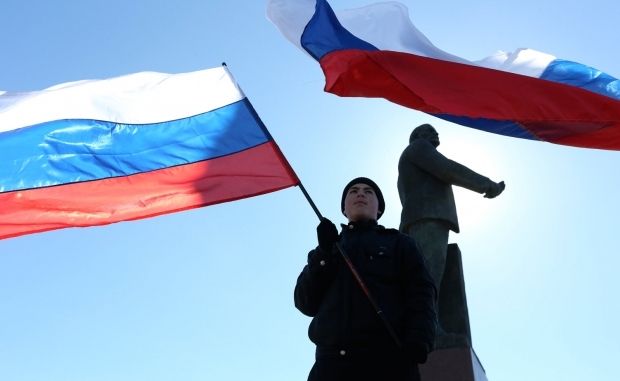
Is withdrawal of foreign troops possible?
It’s possible, given the will of the Russian Federation. We are being told that they can’t withdraw their troops because there will be nobody to guard ammunition depots (there are also those within 2 km to the Ukrainian border), and it is dangerous for the region. But we're not just talking about withdrawing the troops, nut also about withdrawing the ammunition. The last soldier should leave with the last bullet. But it's hard to imagine today.
How do you see reintegration of Transnistria in Moldova?
There are different approaches to solving this problem. And the definition of the status of Transnistria is the main issue. We see it (as it is also seen by the EU and Ukraine), is a special region with special status of broad autonomy, while respecting the principle of territorial integrity. So that the local authorities had powers and prerogatives, including through financial, fiscal autonomy, to provide solutions to all the problems facing the region, except for such important elements as foreign policy, security issues, border security, territorial integrity and so on.
But Moscow and Tiraspol see the status of Transnistria differently...
... offering federalization. Almost the same as in the Ukrainian Donbas...
But we do not accept federation. We are afraid of federalization, as we see in this term a threat of the collapse of the state. This model can be used against the territorial integrity and sovereignty of the state, to break away. Is it dangerous. Therefore, we are not sure that federalization would lead to a lasting and sustainable solution to the conflict. We don’t want to open a "Pandora's box."
Do you believe that the movement of Moldova and Ukraine toward the EU is an effective way to force troubled regions of our countries to reintegrate with us?
I am pleased to see the same approach in Chisinau and Kyiv in terms of finding ways to return these territories and their reintegration. The most important civilizational factor and the most effective factor is creating the most attractive society development model in a controlled territory. More developed social programs, medicine, roads, law enforcement and judicial system, human rights protection – all of this can become an impetus for the people living in the troubled regions.
It’s also important to sustain openness to these regions. Of course, we can also create more problems for them, but I doubt that it will bring us to the expected outcome.
Another factor of reintegration is keeping all the leading actors in the mechanisms of conflict settlement – the interested states and geopolitical forces – the EU, the U.S. and Russia.
We may criticize Russia for how it’s been not really rightfully treating us, but we must admit that we won’t be able to resolve our problems alone, face to face, without Russia.
Tatiana Urbanskaya

